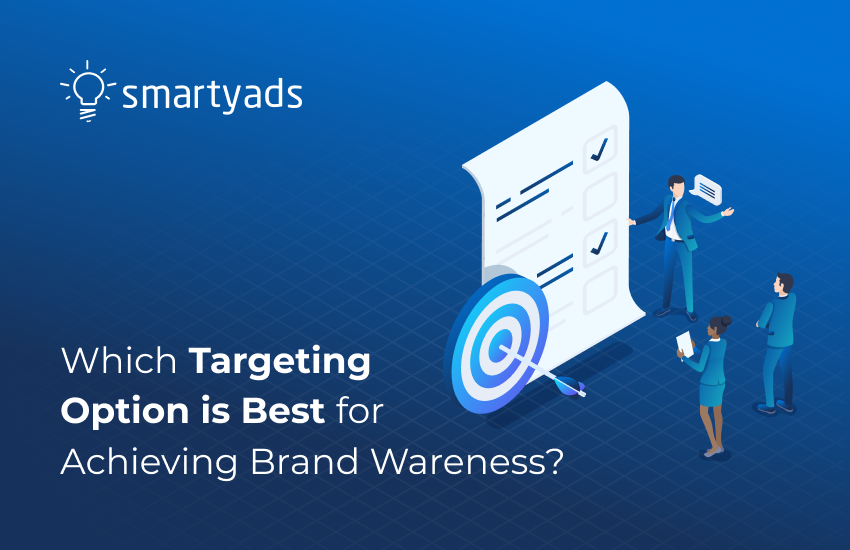In the world of constantly evolving digital commerce, competing for your customers has never been more important. In order to stand out from the competition, every brand needs to achieve brand awareness. The best and most cost-effective way to do this is through targeting, to ensure that your ads are displayed only to those people who might actually be interested in them.
Today, 56% of customers say brands need to better understand clients' preferences. Investing money and time into learning about your target audience, takes you one step closer to marketing more effectively.
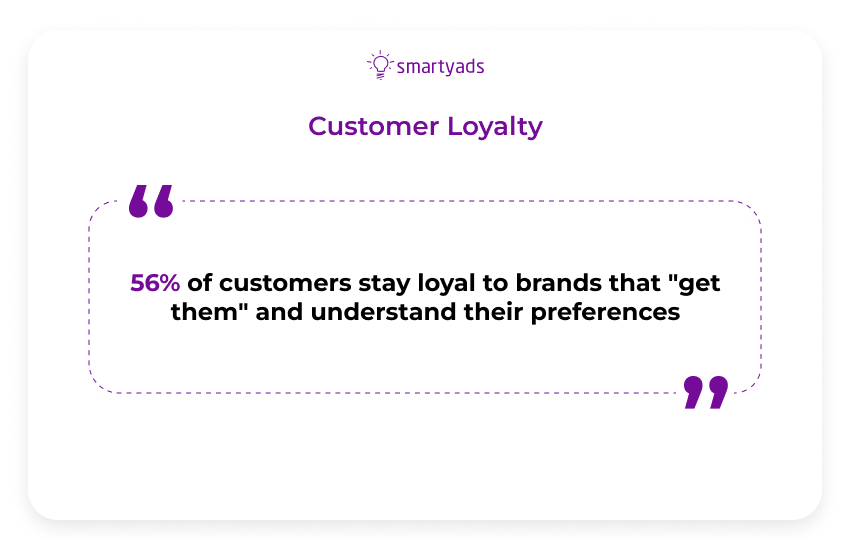
Therefore, in this article, we'll discuss, which targeting option is best for achieving brand awareness.
Why knowing your target audience is essential to achieving brand awareness
First, let's discuss why targeting your audience is so important for increasing your brand awareness. To do so, you must imagine yourself both as a brand manager and a consumer. But, there's nothing difficult about that, because we are all consumers every day of our daily lives.
Remember the last ad you saw on your social media feed. Was it successful? Did it meet your needs?
For example, Twitter often gives out the most irrelevant ads for me (they are in Arabic), and it causes nothing but irritation. They definitely don’t know which targeting option is best for achieving brand awareness.
What kind of campaign is good for achieving brand awareness?
The most common and effective advertising campaign for achieving brand awareness is the PPM campaign. Such campaigns are paid per thousand impressions, not per click, and now we will tell you why it is important to achieve brand awareness.
What you need first and foremost is to "grab" the attention of your potential consumers so they know about your brand. These campaigns don't actually focus on conversions or click-throughs.
Clip thinking is increasingly permeating our lives, we rush from one website to the other as fast as we drive from city to city for some business.
Targeting your audience is the most relevant and cost-effective option for achieving brand awareness. Simply because it makes no sense to show an advertisement to someone who is completely uninterested in it, it will cause nothing but irritation and distaste for your own brand. Which is exactly the opposite of the feelings we want.
So, which tool can help you to achieve brand awareness through its targeting option? And which targeting option is best for achieving brand awareness?
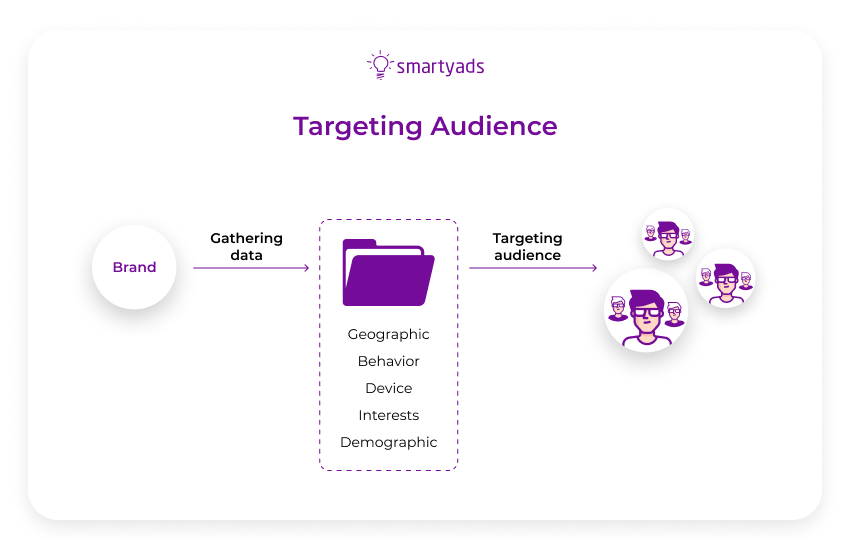
Targeting option of Google display ads
Google has two main networks to place your ads, namely:
- Google Display Network
- Google Search Network
What is the targeting option of the Google Search Network?
Ads on the search engine network appear after a search request is entered by the user. This type of advertising is quite limited because it depends entirely on the user's requests.
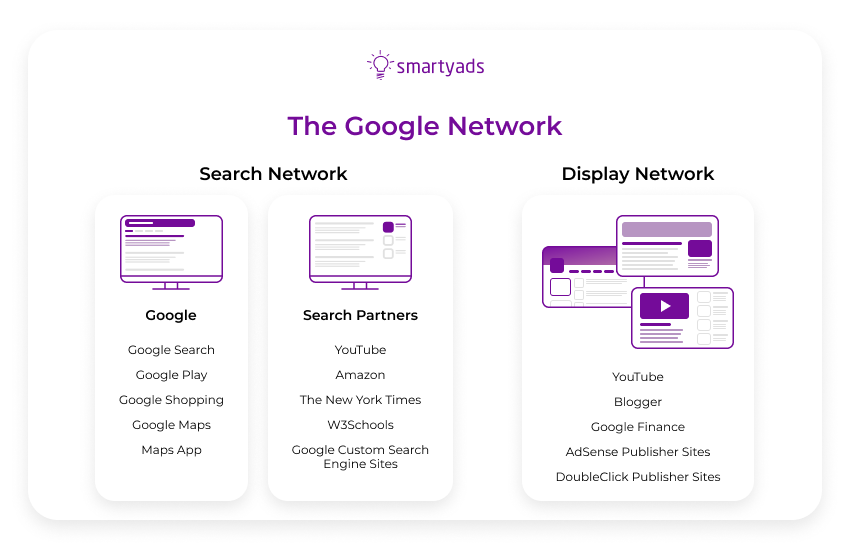
Disadvantages of Google search engine:
You need a keyword for targeting options, which is ineffective for brand awareness. Using niche generic keywords costs you money because of the competition that arises.
There is no pay per mille (PPM) in this targeting option.
In order to take advantage of cheaper pay-per-view, you need to use GDN or programmatic ads.
What is the targeting option of the Google Display Network (GDN)?
The best way to use the Google Ads platform for maximum awareness is to use GDN. It gives you an advantage because of its substantive reach and cheaper clicks. And that's exactly what you need in a brand awareness campaign.
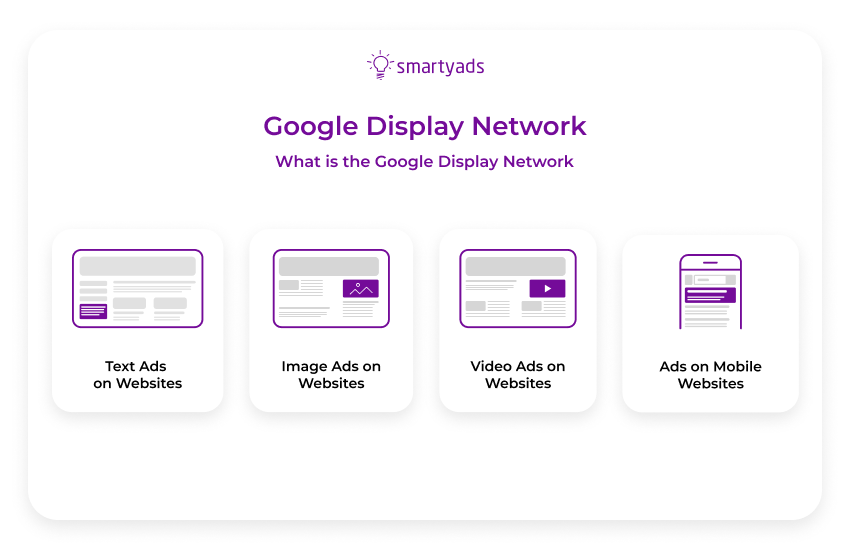
There are three Google display ads targeting options to start a brand awareness campaign:
- Predefined Topics;
- Affinity Audiences;
- Custom Intent.
Predefined topics vs. Affinity Audiences targeting option
What are predefined topics targeting option
These are certain niche groups of sites that may be attractive to users and you need to know them to decide which targeting option is best for achieving brand awareness. For example, if you're in the business of selling home improvement products, your ad will be placed on interior decorating sites.
You can combine this targeting option with keyword targeting, but by choosing from them, the system will give preference to keywords.
What is Affinity Audience Targeting?
Affinity targeting option consists of a fairly broad range of people. The system looks at users' interests based on a holistic picture of their lives, then moves on to a narrower range of interests, and so on, until it finds something that matches your query.
You can see all the Affinity Audiences groups in the official table from Google.
But you can also make your own table with Custom Affinity Audiences.
What are Custom Affinity Audiences?
Custom Affinity Audiences allow marketers to create their own Affinity audience that is precisely targeted to their specific needs and goals based on recent user activity.
To create Custom Affinity Audiences, you define your target custom-made audiences by simply entering keywords, URLs, and apps to reach users that can be your website visitors.
Many experts find that this option is best for campaigns to increase brand awareness. So the answer to the question of which targeting option is best for achieving brand awareness may be Affinity Audiences or Custom Affinity audiences.
Custom Affinity Audiences shouldn't be mistaken for Custom Intent.
What is Custom Intent?
Custom Intent was launched by Google in 2018. It also allows you to manually enter URLs and keywords related to a product, but it uses declared and inferred data to predict the possibility of a user visiting a specific page rather than the user's existing browsing history when displaying ads. Custom Intent is lower in the marketing funnel than Custom Affinity Audiences, so it's good for conversion-focused campaigns and not so good for achieving brand awareness.
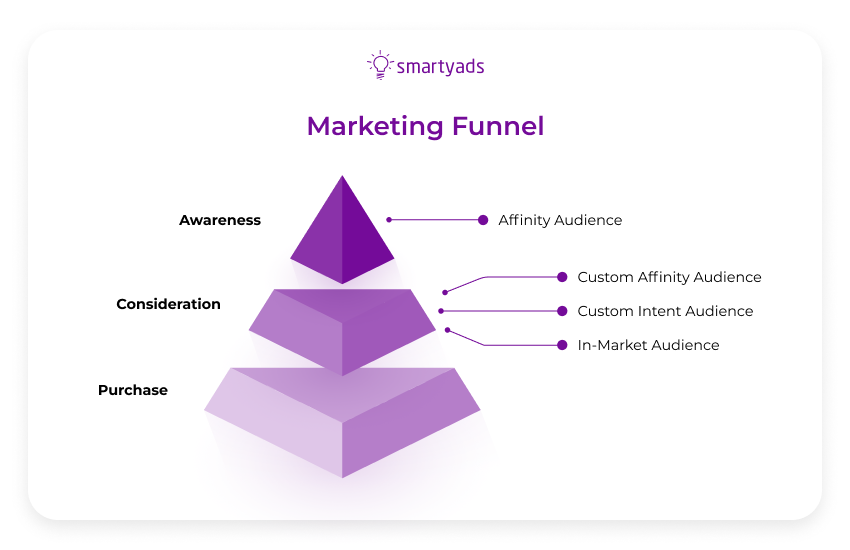
Disadvantages of using GDN
Inability to advertise on non-Google sites
Although the Google ads ecosystem is very broad and indirectly affects almost everything on the Internet, you cannot advertise on other platforms that do not belong to Google.
Limited ad formats
The most popular formats (banner and video) will be available on Google ads, but they are still very limited, especially when compared to programmatic advertising. Video ads, for example, can only be shown on YouTube and its partner websites.
Programmatic platforms, on the other hand, allow you to show such advertising in mobile apps, on streaming services, or even on outdoor advertising screens.
Programmatic is the next step after GDN for achieving brand awareness
GDN or Google display ads puts us in front of several challenges.
However, there is a system that can take the headache out of these tasks. Programmatic advertising platforms are essentially very similar to Google's ads. The only difference is that they are much more automated and have more options for ad settings.
It looks like this:
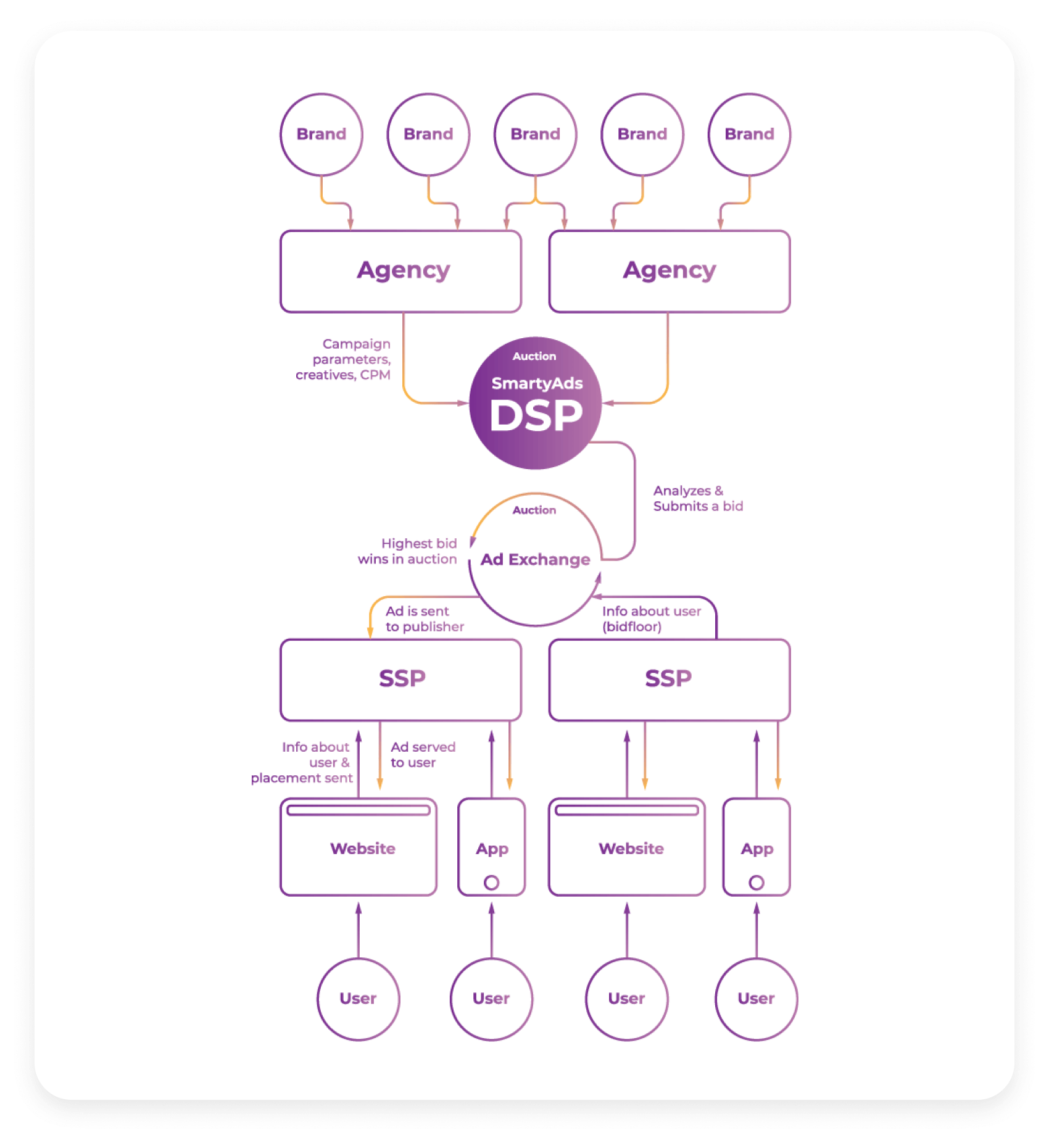
Benefits of programmatic advertising for achieving brand awareness
There isn't one major benefit, but several:
Many devices
Today people don't just use computers or even phones to browse sites. TVs, gaming consoles, and even electric teapots are now accessing the Internet. And programmatic advertising can reach all of these devices (all except the kettle).
More targeting options
To decide which targeting option is best for achieving brand awareness you need to know how many choices you have.
You can categorize your audience according to behavioral targeting, location-based, in-store attribution, etc. The latter allows you to display ads for your store if the user's device has been to that location. This is a great tool for retargeting and achieving brand awareness.
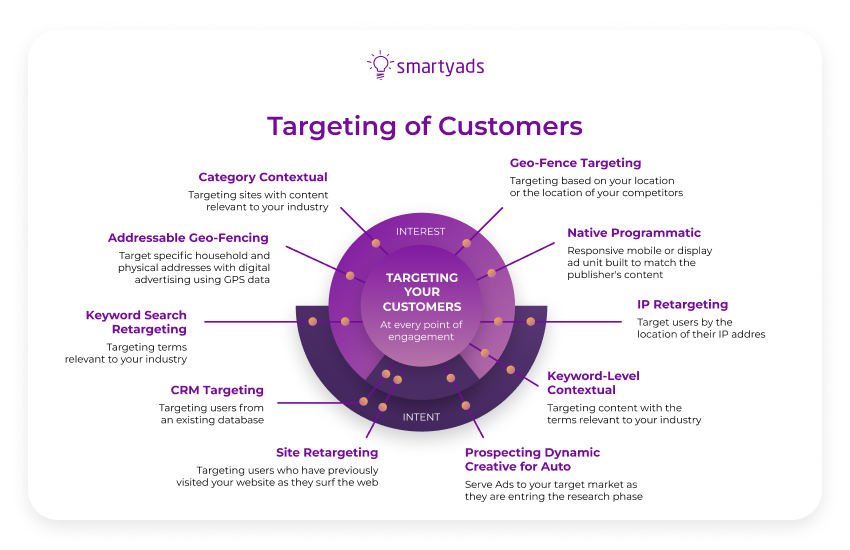
Ad visibility
Most programmatic platforms use real-time bidding as a tool for advertising exchange. Only verified advertisers and publishers get into bidding, which makes such bidding safe and allows you to expand your list of potentially available users, and therefore gives you the opportunity to reach users and increase your brand awareness.
Premium inventory
With programmatic, you can get into the private marketplace (PMP) with more exclusive websites. Only a few advertisers are usually allowed to bid in this cabinet and the initial bid is set by the publisher himself, but we are talking about advertising spots in popular portals with millions of views, so it is definitely good for your brand awareness.
Which targeting option is best for achieving brand awareness?
The differences between Google display ads and programmatic ads aren't obvious, and Google Ads is usually not directly attributed to programmatic platforms, although it does have elements of programmatic advertising such as SSP, DSP, Ad Exchange, Ad server, and DMP.
So what's the difference between Google ads and programmatic?
Marketplace size. Google display ads conducts RTB auctions only on its own platform, which means it only covers its own websites.
Programmatic advertising appeals to many different sites, which greatly expands the advertising reach.
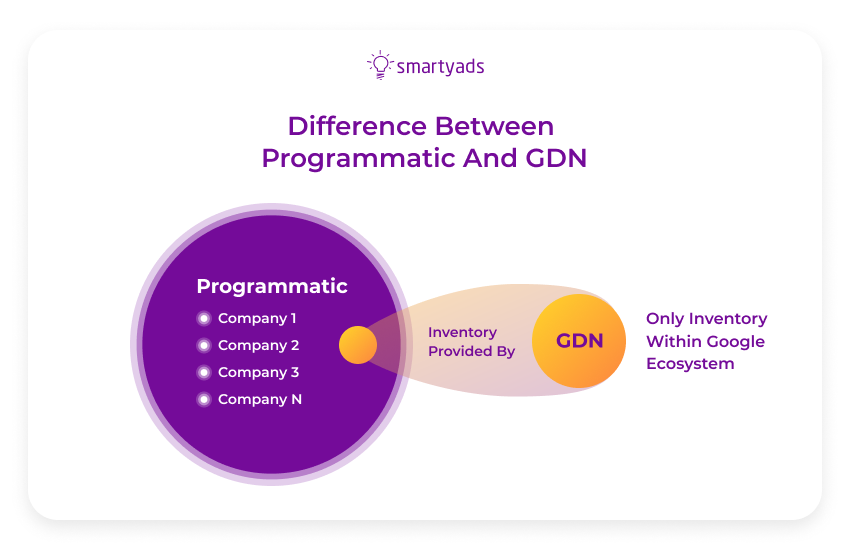
Data for targeting. Because of how global Google is, it has a lot of exclusive data from users. Programmatic platforms don't have access to this information, so they use third-party data, Google can't use such information.
GDN is simple and easy to use, especially if you're just starting out with digital advertising. In addition, Google does not have a minimum budget to start an advertising campaign, whereas programmatic platforms usually have one. The main question of this article is "which targeting option is best for achieving brand awareness", and programmatic platforms offer broader and more flexible functionality with greater reach. But it will take more time and effort to learn it.
It's up to you to choose which targeting option is best for achieving brand awareness. But if you want to start your digital advertising journey now, welcome to SmartyAds DSP!
